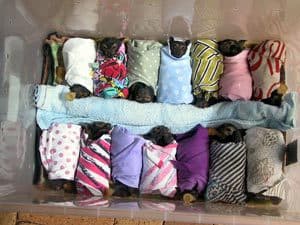Council yesterday voted to apply for a damage mitigation permit to relocate the bat colonies near the Cairns City Library. Council voted against such a motion in October 2012, presumably due to the prohibitive cost of the relocation. According to the October Council report, such a relocation would cost at least $80,000 with costs increasing if multiple relocations were required due to dispersal to a problematic location.
This time around, Premier Newman weighed in on the debate, threatening to mobilise a workforce to deal with the issue and charge Council for the cost. Unfortunately the Premier is not an expert on the relocation of bat colonies, and therefore may not be aware of the risks and costs associated with such relocations.
“Premier Newman has lashed out at Councils for failing to act on the issue of bats, claiming that urgent action is required, but he has offered no good reason why haste is necessary. In fact the message that we’re hearing from the community is that a well-informed, measured and ethical approach is what is required.”
“Relocating these flying fox colonies is not an efficient use of time and money, and the results are uncertain” said Cairns and Far North Environment Centre Coordinator Anna McGuire. “The flying foxes may relocate to a problematic location, or return to the original location, with some relocation programs dragging on for as long as 9 years and becoming financial nightmares. These colonies harm no one and draw crowds of tourists who come to see the bats fly out each evening.”
“Research suggests that relocation of colonies will add further stress to these populations, increasing the susceptibility of individuals to disease. The stress of the relocation can actually increase the possibility of virus circulation and transmission in the bat colonies.”
 “If the Premier is concerned about health risks associated with flying fox colonies, the best long-term solution is to make sure people in the community understand the risks and know how to minimise them. Less than 1% of wild bats carry Australian Bat Lyssavirus (ABLV) and there have only been 3 cases of human infection over the past 17 years. Although the consequences are high, the chance of contracting this disease is low, particularly if care is taken to avoid handling bats.”
“If the Premier is concerned about health risks associated with flying fox colonies, the best long-term solution is to make sure people in the community understand the risks and know how to minimise them. Less than 1% of wild bats carry Australian Bat Lyssavirus (ABLV) and there have only been 3 cases of human infection over the past 17 years. Although the consequences are high, the chance of contracting this disease is low, particularly if care is taken to avoid handling bats.”
Media contact:
Anna McGuire, Coordinator, 4032 1746
Posted in
- Topics: Biodiversity, Planning/Development


